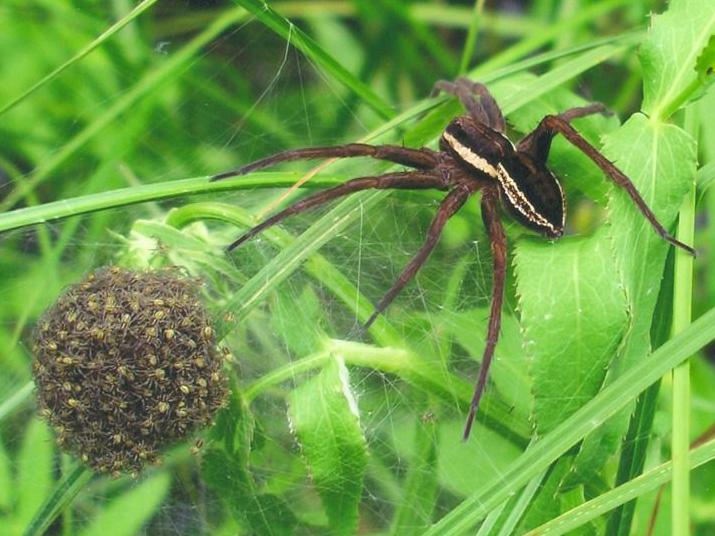Hundreds of Britain's biggest native spiders released into the wild
Endangered species has made successful recovery since conservation efforts began in 2011

Around 400 fen raft spiders, the UK’s largest native species of arachnid, have been released into the wild by zookeepers at Surrey’s Chessington World of Adventures.
The fen raft spider has a brown or black body with white or cream stripes along the sides. With a span of up to almost three inches (8cm), they are the largest of the UK’s 660 native species of spider.
The species only lives in fens, marshes and wetlands, using their long hairy legs to skate across the surface of the water.
The spiders are found across mainland Europe and in particular areas in the south of England and in Wales.
However, populations have declined in recent years and in Britain it has been listed as endangered.
There are only three known populations of the spider in the UK -- at Redgrave and Lopham Fen in Suffolk, the Pevensey levels in East Sussex, and Pant-y-Sais Fen and Crymlyn Bog near Swansea.
But zookeepers have been working since 2011 on a conservation programme to ensure the species’ survival.
The programme has seen populations almost double, and the species will no longer need rearing in zoos to ensure its survival.
The wetland-dwelling arachnids feed largely on other spiders, as well as dragonfly larvae, pond skaters, and even eat the occasional tadpole and small fish.
Female fen raft spiders build an egg sac for their offspring, which they routinely dip into water every few hours to keep moist.
After the spiderlings hatch, the new mother spins a nursery web up to 25cm across that forms a silk tent over the water which she guards for a week. They then disperse.
Subscribe to Independent Premium to bookmark this article
Want to bookmark your favourite articles and stories to read or reference later? Start your Independent Premium subscription today.

Join our commenting forum
Join thought-provoking conversations, follow other Independent readers and see their replies